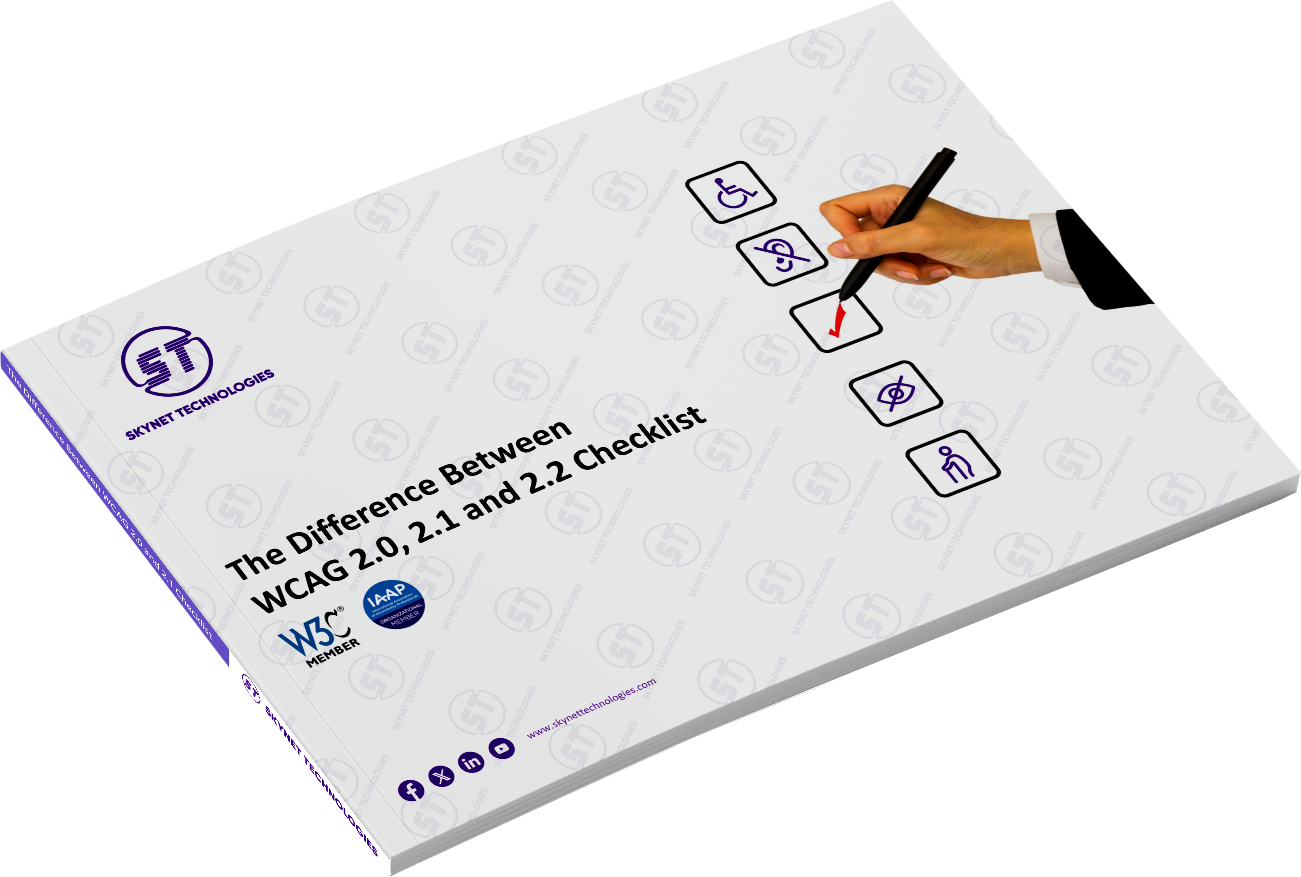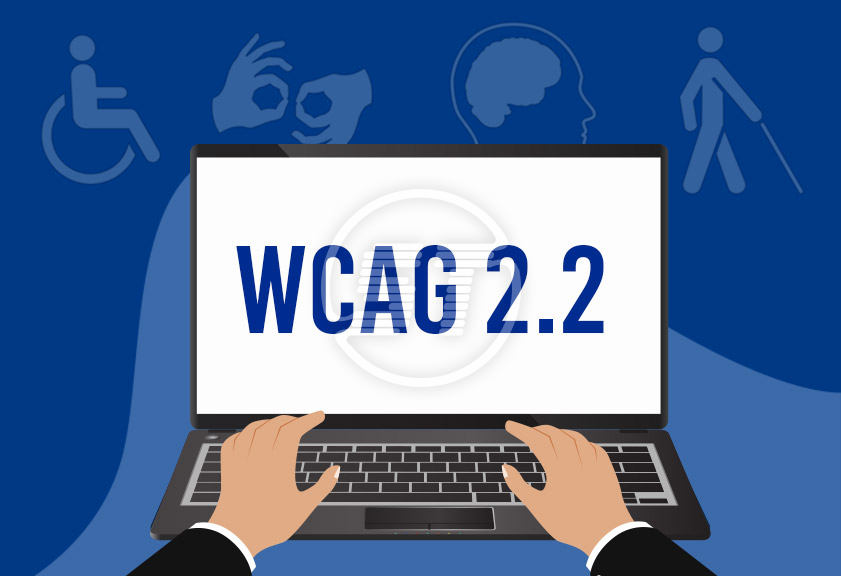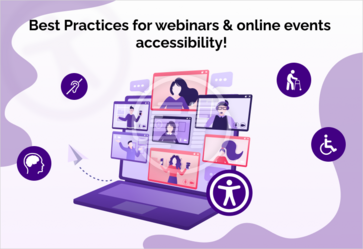What is WCAG?
WCAG stands for Web Content Accessibility Guidelines. It is an international standard for web accessibility developed by W3C (World Wide Web Consortium), the standard organization responsible for HTML and CSS standards. The earlier versions of WCAG are 1.0, 2.0, 2.1 and the latest version WCAG 2.2 is set for official release in the summer of 2021. The latest version of WCAG works on top of the earlier version so the criteria of the older version remain along with the newly added success criteria. WCAG 2.2 is backward-compatible and has a total of 59 criteria with 50 from the previous version and 9 newly added.
WCAG 2.2 Checklist
WCAG has three conformance levels - A(lowest), AA (mid-range), and AAA (highest). You should strive to conform to the AA level. If you want to go the extra mile in improving your web accessibility, you may also try to incorporate AAA into your website/app.
WCAG 2.2 has introduced 9 new criteria taking the total AA guidelines to 59.
Guideline 2.4 Navigable
About how to help the users navigate, find the content they are looking for, and determine where they are in their user journey.
2.4.11 Focus Appearance (Minimum) (AA)
Make sure your focus indicator clearly stands out from the background. For the keyboard focus indicators, the following elements hold true:
- Minimum Area - The focus indication area has got to be greater than/equal to 1 CSS pixel border of the control or a minimum thickness of 8 pixels along the shortest side of the element.
- Change of Contrast - The focus indicator color change area has a contrast ratio of 3:1 with the unfocused state colors.
- Adjacent Contrast - The focus indication area has a contrast ratio of 3:1 against all the adjacent colors or has a thickness of a minimum of 2 CSS pixels.
- Unobscured - The focused item is not entirely concealed by the author-created content.
2.4.12 Focus Appearance (Enhanced) (AAA)
Make sure your focus indicator clearly stands out from the background. For the keyboard focus indicators, the following elements hold true:
- Minimum Area - The focus indication area has got to be greater than/equal to 2 CSS pixel solid borders around the control.
- Change of Contrast - The focus indicator color change area has a contrast ratio of at least 4.5:1 with the unfocused state colors.
- Unobscured - None of the focused items is entirely concealed by the author-created content.
2.4.13 Fixed Reference Points (A)
Ensure your e-publications have page numbers and if there are any printed versions, see that they match with that version as well. This mechanism helps is easy navigation maintaining the flow of content irrespective of the platforms.
Guideline 2.5 Input Modalities
For ease-of-use, while operating the functionality through various inputs other than the keyboard.
2.5.7 Dragging (AA)
Wherever dragging movements are required, you can provide alternatives such as tapping and clicking. This is helpful for people with mobility impairments.
2.5.8 Pointer Target Spacing (AA)
The interactive targets must take up at least 44*44 pixels of space except when:
- Enlarge - A mechanism is there to change the CSS pixel size of each target, or spacing, so one can have an area of 44*44 CSS pixels that include it but no other targets.
- Inline - When the target is in a sentence or a text block
- User-Agent - The target size is controlled by the user agent and not modified by the author
- Essential - A specific presentation of the target is important to the information being conveyed.
Guideline 3.2 Predictable
Display and operate the webpages in predictable ways.
3.2.6 Findable Help (A)
If the help option is available, make sure it is there consistently, in the same place so it can be easily located. Help option entails human contact details, self-help options, fully automated contact mechanisms.
3.2.7. Hidden Controls (AA)
The control mechanisms like edit buttons should be relevant, persistently visible, and not hidden somewhere. They shouldn’t be difficult to trace until they receive a mouse hover over or focus.
Guideline 3.3 Input Assistance
To help the users avoid and correct mistakes.
3.3.7 Accessible Authentication (A)
If there is a cognitive test in the authentication process, there needs to be an alternative way to authenticate that doesn’t rely on the cognitive function tests.
3.3.8 Redundant Entry (A)
While filling out a form, there need to be auto-populated or selection options that prompt the previously entered information. Password confirmation or abandoned forms are exceptions.
Impact of WCAG 2.2
Though WCAG 2.1 has a comprehensive set of accessibility guidelines, some users with specific needs still continue to face navigational issues. In fact, certain types of disorders that were ignored earlier were taken into account under the current regulations. Normative accessibility doesn’t cover a large number of impairments and disorders. For instance, cognitive or motor disorders. The guidelines have proposed minimum spacing which may vary from one user to another, especially if the user is having Parkinson’s disease, he may find it difficult to navigate. These disorders require very specific adaptations.
WCAG 2.2 was rolled out with the intention of enhancing the web accessibility furthermore with the underlying WCAG 2.1 guidelines. They focus on improving accessibility guidance for the users having cognitive and learning disabilities, users with poor vision, users of e-books, and users with disabilities on mobile phones. With the increase in mobile phone users, this new update is essential to ensure that the websites are created to optimize mobile device usability.
Why is it best to incorporate WCAG 2.2 Guidelines?
1. ADA Compliance Requirements
One should comply with WCAG 2.2 guidelines for legal reasons. The Americans with Disabilities Act (ADA) although doesn’t mention web accessibility explicitly, the legal landscape dictates that the law extends even to the digital landscape. In fact, many businesses having a digital footprint faced lawsuits when their websites have violated ADA guidelines. WCAG 2.2 guidelines would be incorporated into the law in 2021 and hence it is advisable for the businesses to confirm with the latest standards to be at the top of your game.
2. Moral Reasons
When a section of the audience with disabilities pertaining to visual, auditory, motor, physical, cognitive, and neurological impairments are denied access to the web, then it is a clear case of discrimination. Even the web should be an inclusive space. With the right guidelines, one can make the web accessible to everyone. Businesses need to be thoughtful, socially conscious, and shouldn’t discriminate against anyone. One should strive to build a cascade of inclusiveness irrespective of the legally binding agreements.
3. Business Outcomes
There is a direct correlation between web accessibility and business performance as it offers you a competitive advantage and accentuates your digital presence. By improving the access to everyone, you are essentially increasing the number of possible visitors to your website/app. This is a larger opportunity for all pragmatic reasons as you improve your chances of conversion and also build a customer base. The inevitable outcome of building an accessible website is the financial benefits that stem from increased traffic- improved sales, low maintenance costs, avoiding legal costs, etc.
Closing Thoughts
Web Content Accessibility Guidelines (WCAG) 2.2 has rolled out new guidelines to make the web content more accessible. With these, you are making the web content more accessible to a wider range of people with disabilities. This isn’t difficult but you need to understand the users with disabilities interact with your website/app. You need to focus on incorporating the best practices to construct an inclusive web.
Skynet Technologies is offering ADA compliant website design and development services followed by Web Content Accessibility Guidelines (WCAG) standards. We can make your Drupal, WordPress, Magento, PHP, Laravel website or Android, iOS Mobile App ADA Compliant to make it accessible for everyone.

The Difference Between WCAG 2.0, 2.1, and 2.2 Checklist
The WCAG 2.0, 2.1, and 2.2 Checklist covers web accessibility of all the content and is not specified to any technology or industry. It has created a roadmap to deliver a better exclusive online experience. The WCAG guidelines are helped you to address those with auditory, physical, speech, visual, learning, cognitive, neurological, and language disabilities.
Explore how to bring your digital properties or assets into compliance with the latest Web Content Accessibility Guidelines (WCAG) by downloading our interactive WCAG 2.0, 2.1, and 2.2 Checklist now.
Download Now

